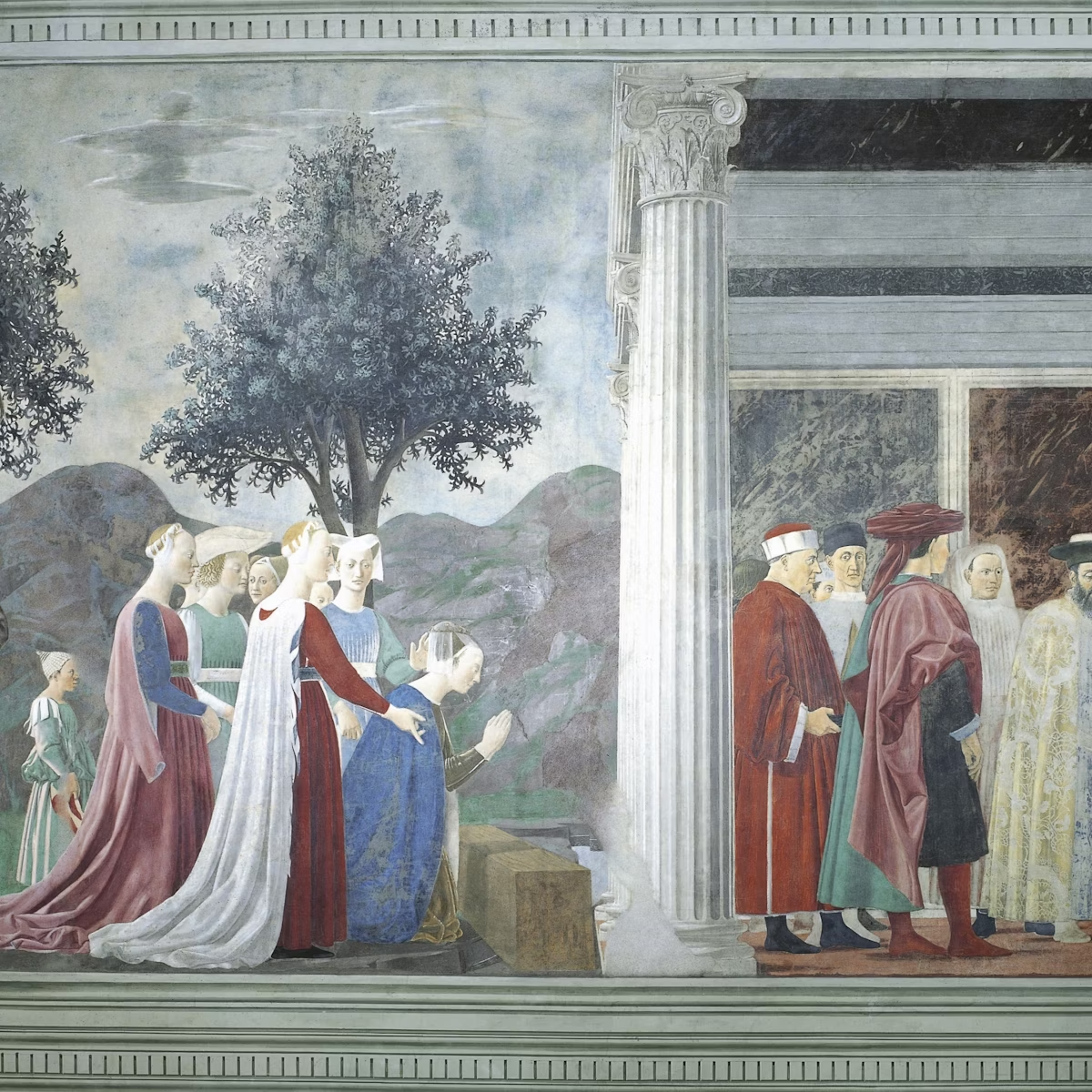This remote Franciscan monastic complex is where St Francis of Assisi is said to have received the stigmata and is a major pilgrimage destination. The Corridoio delle Stimmate, decorated with modern frescoes recounting St Francis' life, leads to the Cappella delle Stimmate, built in 1263 on the spot where the saint supposedly received the stigmata two years before his death, aged 44. The monumental Crucifixion (c 1481) by Andrea della Robbia here is magnificent.
Across from the door to the chapel, steps lead outside to the Precipicio, the precipice – literally – from which the devil supposedly tried to hurl Francis down onto the rocks below. The narrow path is not for the vertiginously challenged.
The monastery basilica houses remarkably fine polychrome glazed ceramics by Andrea della Robbia and his studio: a Madonna and Child Enthroned between Saints to your right as you enter the church; a Nativity on the right before the altar; an Adoration in the small chapel to the right of the altar; saints on either side of the altar; a huge Ascension in the chapel to the left of the altar; and a beautiful Annunciation in the second chapel to the left.
Don't miss the Cappella delle Reliquie, a small chapel on the right side of the basilica, safeguarding the habit that Francis wore when he received the stigmata in 1224. Other relics include the saint's girdle, a blood-stained cloth used to clean his stigmatic wounds, a whip used by Francis as an instrument of penance, and the stick he walked with when roaming the mountains.
In the interesting Museo della Verna, monastic life is evoked by artefacts such as ancient Bibles and song books, manuscripts, sacred art, the recreation of an old pharmacy and a huge cauldron above the old kitchen chimney and so on.
By car, follow signs just outside the hamlet of Chiusi della Verna for the monastery complex or take the way of the pilgrims along the taxing 30-minute uphill footpath from Chiusi della Verna – it is 23km east of Bibbiena, accessed via the SP208. There is a pilgrim guesthouse (s/tw €35/55, s/tw with full board €63/106) with a refectory (open 8am-8.30pm, panino €2.50-3, set breakfast/lunch/dinner €4.50/16.50/16), and a cafe-bar selling monk-made products (chocolate, honey, liqueur, jams, conserved fruit) on-site. Parking costs €1.50/10 per 75 minutes/day.

